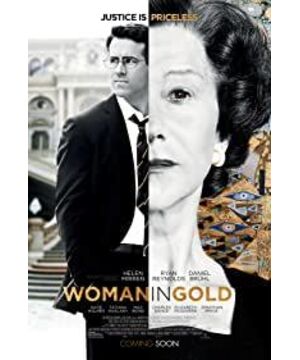The film starts with a woman, a painting, and slowly unfolds the turbulent history of World War II with a very warm narrative tone.
The word "memory" is always the most impressive thing when watching movies. As the plot progressed, that painful memory that was deliberately forgotten by Maria was revealed little by little. But even if they return to Austria, the land that once deprived them of their family’s place to live in their hometown, when the paintings repeatedly hit the wall in reality and echoed the Nazi accomplices in memory, Maria’s memories still have a lot of warmth: once quoted I am proud of-half of the wedding where Vienna gathers, once full of tenderness-familiar street architecture has left the image of the deceased. What a hidden and deep sadness! The hometown that I can't go back to is not because I'm thousands of miles away, not because the flames of war are still alive, but because I've always had grievances in my heart. Through the heavy history, I suddenly discovered that the damage caused always exists.
Keep memory alive.
Don't forget, it's about the life memories of Maria and her family, it's also about the history of driving away her compatriots and making her mother tongue ashamed, and it's about Vienna, the art capital that truly advocates art rather than chasing fame.
Maybe time will bury everything, but we can't let the past follow the wind. Those people and things that live alive in Maria's memory are shown before our eyes through the film, awakening the forgotten history. We need to record, we need to "keep memory alive".
Someone always says to look forward. Perhaps this is why Maria found her painting and hung it in the New York Art Museum. But there is always a deep regret. Maybe Maria's return to her homeland is just seeking a reconciliation, with the past, and the hometown she can't go back to. But she didn't expect to welcome unwelcome hostility.
Maybe Maria returned to Vienna in her memory in heaven.
View more about Woman in Gold reviews










